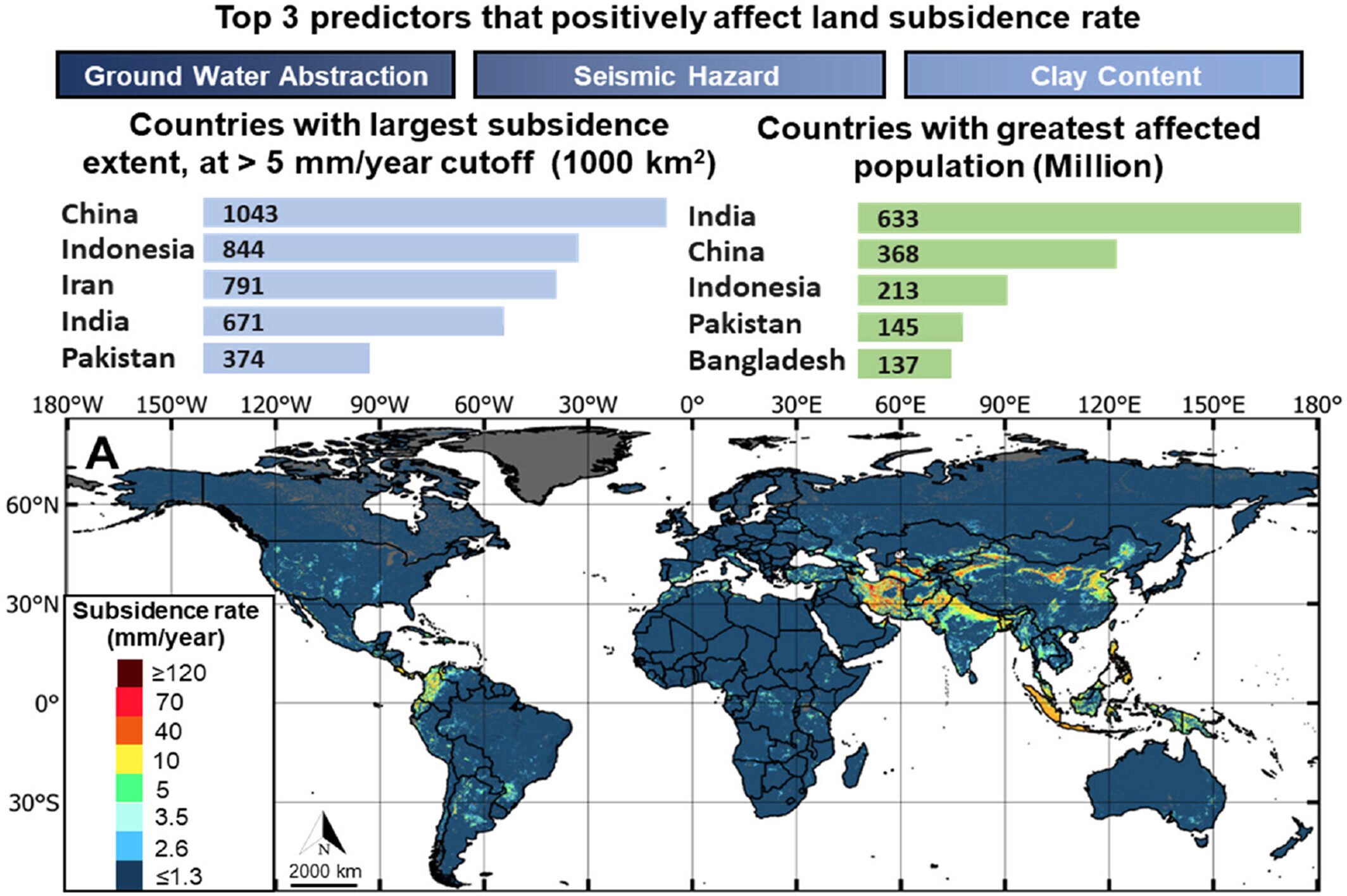
Some of the fastest subsiding, or vertically sinking, places are home to large numbers of people. From figure 2 of Davydzenska et al 2024 Geophysical Research Letters https://doi.org/10.1029/2023GL104497
AGU News
Register to attend the Triennial Earth-Sun Summit during the eclipse!
The Triennial Earth-Sun Summit (TESS) will be held 7-12 April in Dallas, Texas, in the path of totality. Scientific programming begins on 9 April, the day after the eclipse. To register, simply email us at [email protected]. Scientific sessions are on-site only. AGU’s housing is full. [TESS website][scientific program]
Featured Research
Electricity demand spikes emissions during heat waves
Emissions from the power sector have been underestimated by nearly 35% during heat waves in some cases, according to a new study that observed pulses of sulfur dioxide and nitrogen dioxide columns over power plants from space and attributed the spike to elevated electricity use. [Earth’s Future research]
Geoengineering strategy would bring severe drought to tropical Africa
Severe and lengthy droughts brought on by continued high emissions of greenhouse gases could be softened for most of Earth’s lands by injecting sulfate aerosols into the stratosphere. Aerosols scatter incoming sunlight back to space, cooling the planet overall. But a cost may be intensifying drying in some locations, especially tropical Africa. [JGR Atmospheres research]
First global subsidence map reveals sinking problem for cities
Around the world, an estimated 5% of land, or 6.3 million square kilometers, is sinking significantly, affecting 25% of the world’s population — nearly 2 billion people. Groundwater extraction contributes to this sinking problem and land is sinking fastest in Philippines, Iran, Costa Rica, Indonesia and Uzbekistan. [Geophysical Research Letters]
Recovery of Indian summer monsoon will lag behind CO2 removal
Warming has perturbed the regular arrival time of the Indian summer monsoon, risking food security for a billion local inhabitants. In an idealized future world in which carbon dioxide is removed from Earth’s atmosphere at the same rate humanity added it, the monsoon could return to preindustrial patterns, but heat stored in the deep oceans will delay recovery. [Earth’s Future research]
Anzali Wetland, Iran’s “ecological gem,” may dry up by 2060
More sustainable watershed management and agriculture are needed to avoid a desiccated fate. [Eos research spotlight][Journal of Geophysical Research: Atmospheres research]
Plate boundaries may experience higher temperature and stress than we thought
Surface heat flux data shed light on conditions deep below Earth’s surface, at a tectonic plate interface where major earthquakes initiate.[Eos research spotlight] [Geochemistry, Geophysics, Geosystems research]
Get updates about our organization, register for complimentary press access to AGU journals, and find topical experts. Update your subscription preferences.
AGU (www.agu.org) is a global community supporting more than half a million advocates and professionals in Earth and space sciences. Through broad and inclusive partnerships, AGU aims to advance discovery and solution science that accelerate knowledge and create solutions that are ethical, unbiased and respectful of communities and their values. Our programs include serving as a scholarly publisher, convening virtual and in-person events and providing career support. We live our values in everything we do, such as our net zero energy renovated building in Washington, D.C. and our Ethics and Equity Center, which fosters a diverse and inclusive geoscience community to ensure responsible conduct.